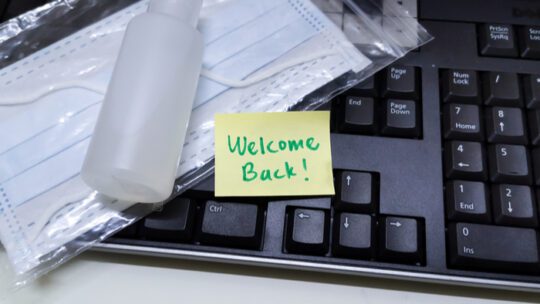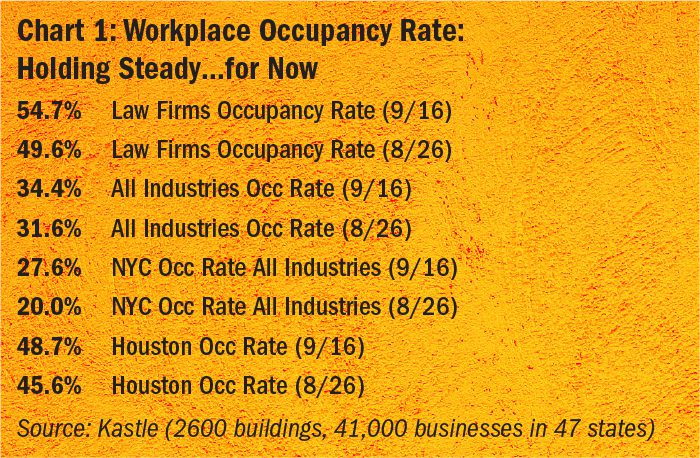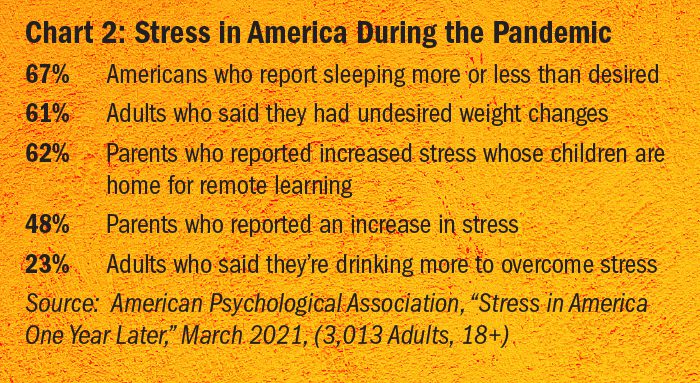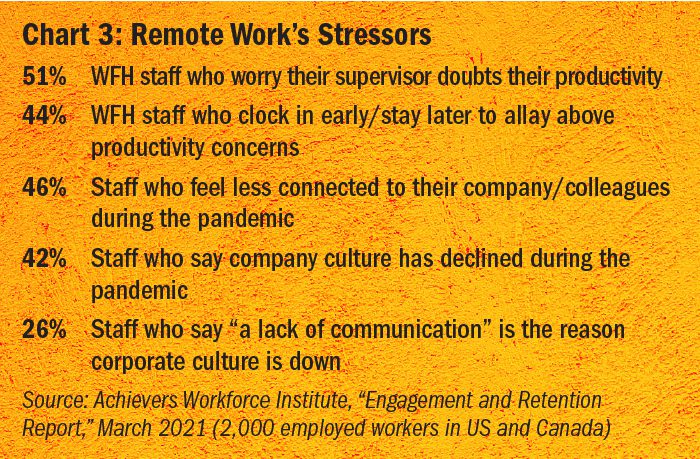
They are among the most-asked questions now: What will the return to office (RTO) look like and when will it happen? For most companies, the truth is, ‘We’re not entirely sure.’
A slew of companies have delayed or postponed RTO several times, resulting in depressed office occupancy rates (see chart 1). Amazon’s office staff isn’t expected back until 2022. Others have reduced their office spaces permanently.

Still others are betting on new work arrangements. These companies argue work from home (WFH), with periodic in-person meetings, will attract the best talent, who can live literally anywhere. Just last week, PricewaterhouseCoopers confirmed a similar arrangement for 40,000 US-based staff.
All this uncertainty means internal communication is at the forefront again, as it was during the pandemic’s outset.
While the moment is unlike anything we’ve seen, PR basics are a useful starting point. For example, looking at the target audience should be the internal communicators’ first consideration. There’s a lot to unpack.
“The pandemic and related obstacles shocked everyone,” says Daniel Rene, managing director at kGlobal. As a result, the audience internal communicators targeted at the pandemic’s outset is vastly different today.
In addition to a heightened awareness around social and racial justice, The Big Quit has prompted workers to question their careers and lives. And answers to those questions led to millions leaving the workforce, including 4 million in April 2021, a high proportion of which were millennials and some 2 million women.
Since women hold 70 percent of PR’s jobs, female employment trends are critical. In June, the number of women in the American workforce stood at 57.5 percent, the lowest level in 30+ years. The future doesn’t seem better. A recent survey of 65,000 workers found one-third of women considering cutting back on their career or quitting. Moreover, the survey found women were more burnt-out than men.
Perhaps most important, workers are stressed (see chart 2) and exhausted. And engagement, a major touchpoint for internal communicators, is way down.

A survey of 2,000 employed staffers found 71 percent are more disengaged now than they were in 2020. More damning: 69 percent said they plan to job hunt this year, vs. 33 percent in 2020.
The same survey includes good and bad news. On the plus side, 60 percent of those surveyed said their employer asked about how to better the employee experience and more than half (54 percent) said there were inquiries about corporate culture and remote/hybrid work preferences. Just fewer than half (48 percent) reported that companies asked about diversity and racial/social justice (44 percent).
Yet 34 percent say their employer is “okay” at acting on such input; 18 percent say their company is “horrible” at it.
Additional factors that have internal communicators concerned include the conflicting and confusing COVID-19 messages spread during the past 19 months (and counting).
Not surprisingly, Americans overall are as anxious about returning to work as vaccinated Americans. RTO anxiety stands at about half (49 percent) for all Americans and 48 percent for vaccinated ones, the American Psychological Association says.
On top of that, some employees are pitting their health concerns with career considerations. While research shows some workers are more productive at home, plenty of WFH staffers worry about being out of the flow if they fail to work at the office (see chart 3). Media reports on this issue do little to lower anxiety levels.

Considering all these issues, what’s the prescription for internal communicators?
Differences Unite Us
Ironically, while internal communicators often accentuate unity in messages, emphasizing differences seems an apt tactic now.
While workers are united in having lived during the pandemic, each has had a slightly different experience. As such, messages should be nuanced and emphasize a variety of accommodations to ease RTO concerns. These include arrangements for childcare and flexible hours.
“One-size-fits-all policies actually fail to fit anyone,” Rene says. Considering the worker mindset, now is a good time to “keep cookie cutters in the kitchen,” he adds.
Another tactic to allay anxiety, says APCO Worldwide’s chief talent officer Agnieszka Yank, is focusing RTO communication on staff safety and wellbeing. Similar to Rene’s advice, Yank urges communicators mention “whatever measures, protocols and policies are necessary to ensure staff safety and compliance with federal and local jurisdiction guidance.” This includes expectations about vaccination status and testing, she says.
Listening Yields Surprises
Yank and Rene agree that listening to staff is a critical early step. Find out what worries the team and address that first, Rene advises. Yank emphasizes the importance of continual surveying, particularly around RTO arrangements, such as hybrid work.
“Listen to their concerns, ideas and perspective on how to make hybrid and [RTO] work for them,” Yank says.
A maxim of data-informed communication is that surveys often yield surprises. Indeed, a number of companies that APCO counsels were surprised to find employees’ RTO concerns centered on public transportation issues. Another surprise was that junior employees were not as eager to return to offices as anticipated.
With uncertainty likely to remain a hallmark of the RTO period, Yank advises communication include language that “acknowledges the uncertainty and rapidly changing circumstances in which we are making decisions.”
When possible, Yank says, set longer timeframes rather than changing and revisiting decisions repeatedly, which may cause unnecessary anxiety.
However, this is not a license to obfuscate. Communicate clearly when plans call for the workplace to re-open. When the company is unsure, say so.
For Yank, honest communication at this moment is paramount. RTO messaging, she says, “is an experiment on a massive scale…we are at the starting point and success will be monitored and adjustments made as we learn.”
As for hybrid work arrangements, Yank notes the critical nature of this message. Communicate the ideal hybrid set-up in the context of your culture, business needs and employee expectations, she says. “And understand that employees expect a lot of flexibility now and many are prepared to quit if their needs and expectations are not met.” And be mindful of how hybrid work will impact DEI efforts.
